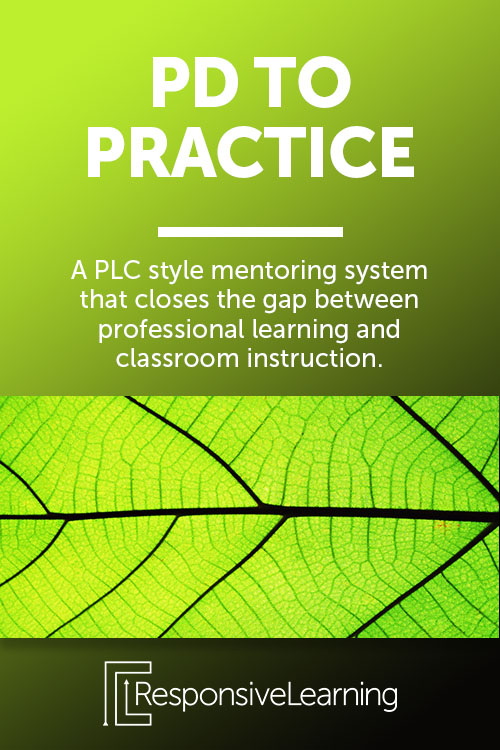Hiring new teachers, especially during a teacher shortage, has become more important and challenging for administrators. From 2012-2018, the number of Bachelor’s degrees in education conferred by US colleges dropped by 21% (NCES). The pandemic only made that problem worse. In February of 2021, the National Education Association reported that 55% of their surveyed members planned to leave education, showing an 18% increase in six months (NEA).
The Problem

Texas is experiencing a 60% increase in the number of contract abandonment reports sent to the state when compared to the 2021 fiscal year. Not only are more teachers leaving education, but there are fewer candidates to fill those positions. Teachers new to the profession need support and mentoring, and when they don’t get that support, they grow frustrated, burn out, and leave. If these new teachers aren’t retained, there are fewer experienced teachers, and the students suffer as a result.
Schools can’t become the best place for students to learn and grow unless we make them the best place for teachers to work and grow. The answer to this dilemma is prescriptive support. It involves a structured plan of mentorship that will provide the framework under which new teachers can reach their fullest potential, and districts will be better equipped to retain their staff.
Three experts in this field recently presented at the Texas Elementary Principals and Supervisors Association (TEPSA) conference held in Round Rock, Texas. Here’s how they facilitate a prescriptive support program that provides mentorship to new teachers.
April Kuck – GT Teacher and Specialist from Giddings ISD
April attributes the use of prescriptive support to elevating the skills of the GISD staff and allowing them to grow in their fields. Her unique perspective combines that of both teacher and administrator.
April was one of those teachers who burned out. After teaching for several years, she left classroom education because she didn’t feel supported. However, after some time out of the classroom, she realized just how much she missed it and decided to return. April brought the experience, insight, and passion to help new teachers who would be filling her shoes and those of other experienced teachers later on.
Turnover is a major concern in her district. With a small budget, it’s more important than ever to retain the investment put into new teachers. This is why mentoring and training for growth are vital to their program. April believes appropriate and effective professional development is an important part of teacher retention. Her goal is to start teacher support and growth early by having new teachers complete the 30-hour GT training, then she meets with them monthly to check in to see how they’re implementing the strategies they learned. She offers guidance when they feel like they’ve hit a roadblock.

April believes that most educators are creative and enjoy solving problems, and she strives to allow them opportunities to express that. She recommends administrators should “tell teachers what you want them to achieve, ask how you can support them, and then let them come up with the lessons.” April continued with a quote from Georgina Chatfield, who said, “There is tension in the evidence that, for the majority of us, increased autonomy correlates with increased job satisfaction and well-being. The more we have control over our own work, the happier we are in our work” (RSA). As April concluded, she reminded us that when teachers are happy with their jobs, they are more passionate and want to continue their work, which increases teacher retention.
Debbie Smith – Director of Teacher Support and AVID from San Marcos CISD
Debbie’s outlook comes from an administrative role that focuses on educating all teachers to better serve students. San Marcos uses the Responsive Learning 6-hour GT update and was the first to purchase the GTID System as well as all of the T-TESS products and PD Library.
SMCISD utilizes two elements of prescriptive support: relevant and on-time professional development and mentoring. They are always looking for ways to improve, and they understand that districts must evaluate their current programs and make adjustments to better serve their teachers. Mentoring started by pairing one mentor with a new teacher. This one-to-one training formed a very intimate relationship, but it soon became cost-prohibitive.
SMCISD then moved to assign a set number of mentors at each school who would help with the day-to-day needs particular to their campus. New teachers were to gain content support through their PLC meetings. This didn’t go quite as well as was planned, so SMCISD moved toward a new program that allows for designated mentor/mentee meeting times where the focus will be on specific needs that are both timely and relevant. The professional development provided in these meetings is adjusted to reflect what’s needed at that moment in time. This prevents the new teachers from becoming overwhelmed at the beginning of the year and provides them with continual support throughout the school year.

Debbie states the importance of supporting teachers so “they feel like they’re a part of the conversation and they’re actually getting the help they need” she explains, “it’s not a judgmental conversation, but more about prescriptive support.” The mentor’s role is to advocate for the new teacher and help with problem-solving. New teachers also meet twice a semester to share ideas and experiences that can further this feeling of inclusivity. These factors create a foundation upon which new teachers can become strong and effective veteran teachers who love what they do and where they work. This support is critical to new teachers’ success and retention.
Suzanne Mitchell – Retired Elementary School Principal and Adjunct Professor/University Supervisor at East Texas Baptist University
As administrators, we must create opportunities for social and emotional learning in our students. It’s equally important that we provide these opportunities to our teachers as well. Prescriptive support accomplishes this for our teachers’ professional growth.
Suzanne recommends that administrators have an honest and authentic conversation with each new teacher. She explains that one of the most important things you can do is “look them in the eye and say, I believe in you.” Suzanne reminds us that, as administrators, we hired these people because we believed they could teach our kids. When a teacher hears that and truly believes it, it takes them to a new level of confidence in their teaching.
The Takeaway

The current standard is to provide new teachers with numerous hours of professional development the week before school starts and then send them off to their classrooms and hope for the best. We then come in later to evaluate them, even though they’ve had little to no mentoring or support in between.
We don’t have the same approach with students, though. We teach, monitor, and assess as we go. New teachers need the same nurturing and consideration to feel like they are an integral part of the campus community because they’re vital for the growth and success of our schools.
An invaluable tool that helps create a solution is PD to Practice. It allows new teachers to have a voice in a place where they can ask for the help they need without fear of repercussions or judgment. The focus is on improving their skills and helping them reach their fullest potential. By creating a growth mindset culture in your school, you are not only educating students who have the skills to succeed, but you’re also building a cultural foundation in your campus that harnesses the inherent collaboration of teachers and will yield more master teachers and retention in the long run.
About the Author: Jacki James is a Master Teacher who has served as a mentor in Klein ISD, Pflugerville ISD, and Georgetown ISD. She retired in 2021 after 27 years of teaching high school English. Jacki now spends her time working to build her anti-bully program, Kindness Matters.







